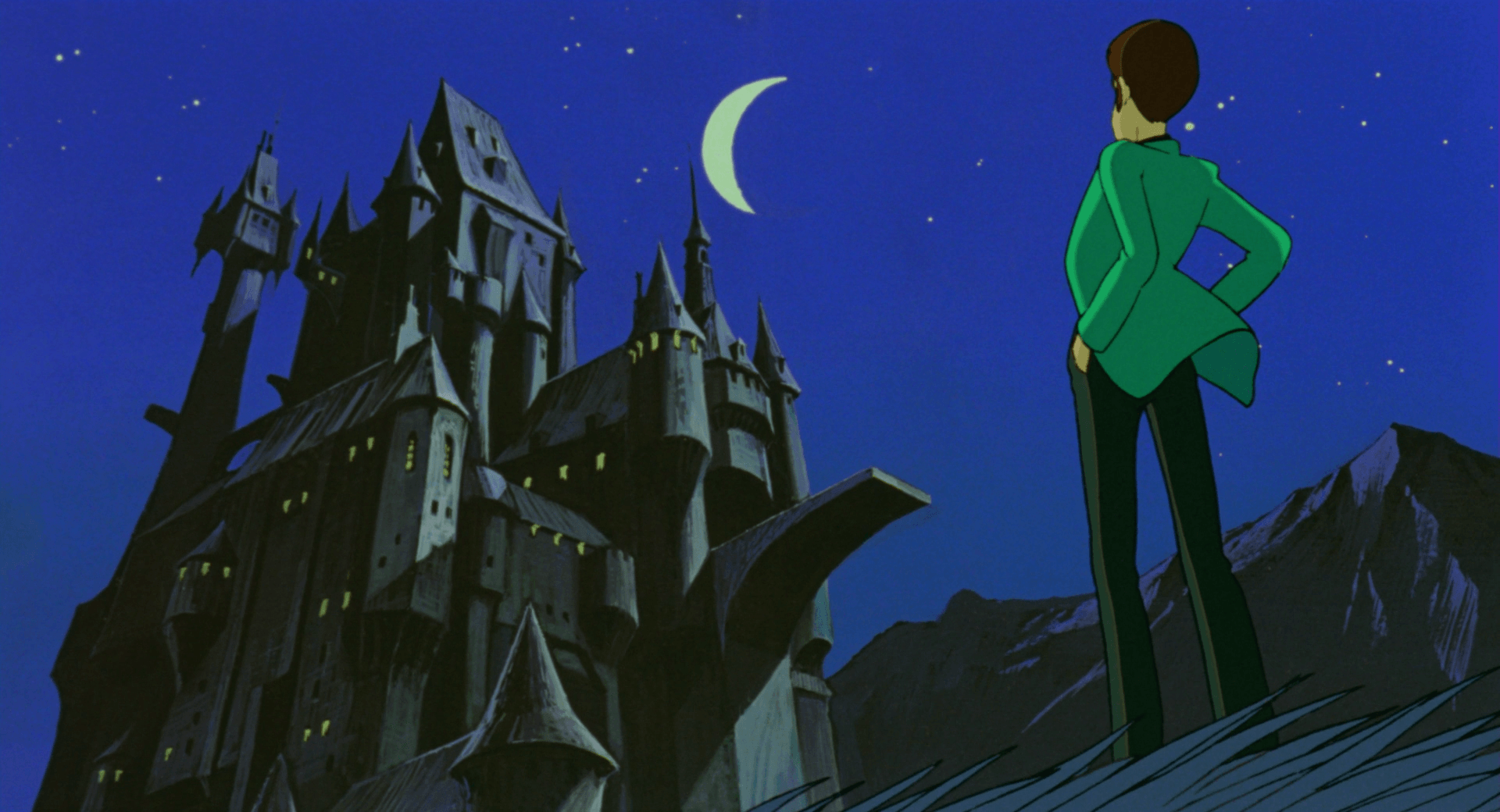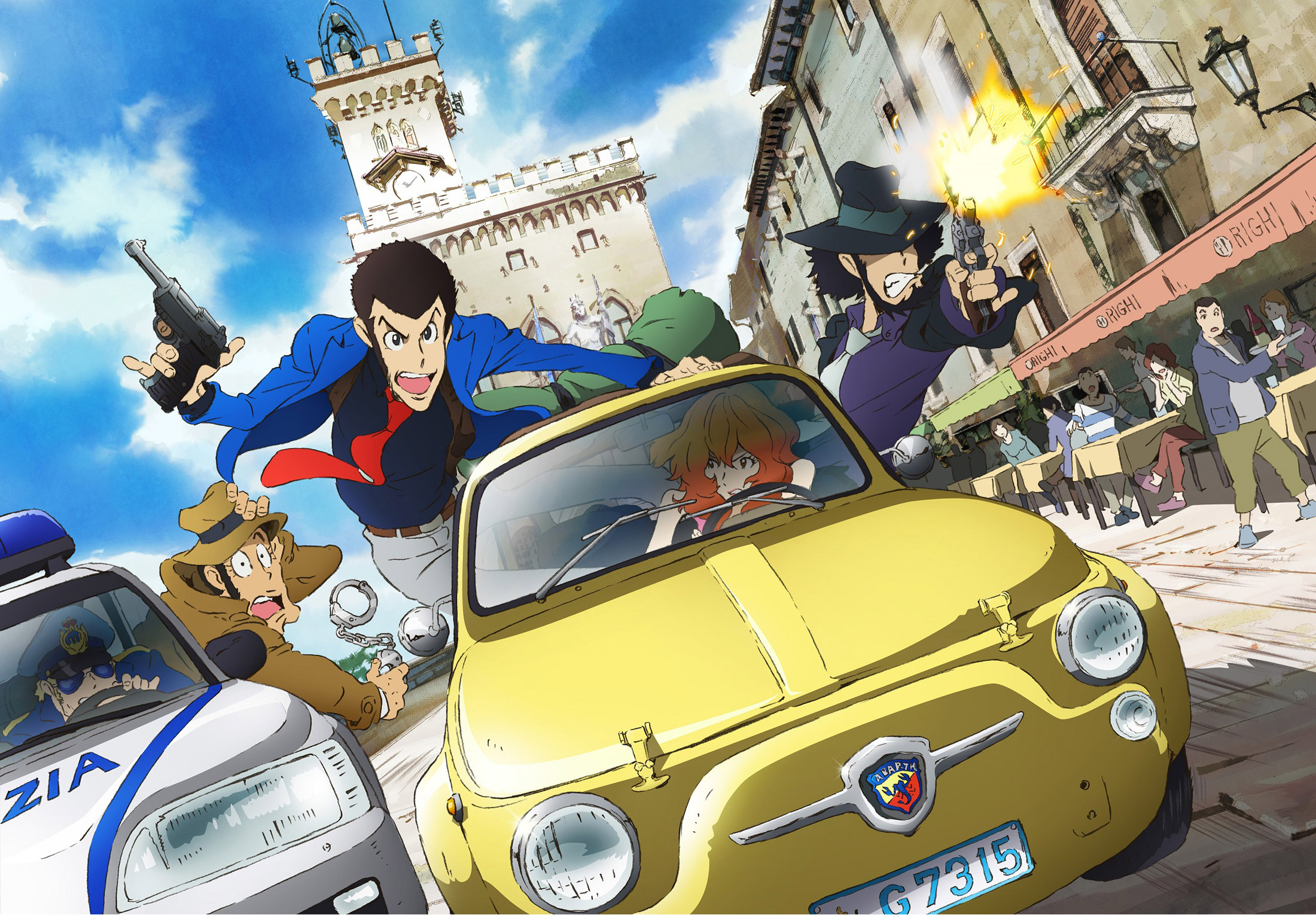Hello there, welcome to another issue of Morning Coffee.
Today I’d like to talk to you about one of my favorite fictional characters of all time.
Issue #36: Arsène Lupin, gentleman thief
I’ve recently started reading The Teeth of the Tiger, one of the most critically acclaimed novels by Maurice Leblanc, featuring gentleman thief Arsène Lupin.
The great thing about these stories is that most of them are now in the public domain, so you can download them and read them free of charge. The Teeth of the Tiger in particular is available on the Project Gutenberg site, and you can download it here.
If you like classic adventure stories, I can’t recommend this one enough. I still haven’t finished it, but so far I’m enjoying every single page like a 12-year-old.
Arsène Lupin first appeared in a story published in French magazine Je sais tout in 1905. The character would go on to appear in a total of 24 books, including novels and short stories, becoming one of the most important literary symbols in early-20th century France.
It’s hard to overstate Lupin’s role in the history of French literature. He is to France what Sherlock Holmes is to Britain: a national hero — or, in this case, antihero.
Lupin is also one of the greatest examples of a Robin Hood-type character: while he is no law-abiding citizen, those he steals from are always worse villains than he is. It’s clear he also possesses a strong moral compass, as he is often willing to give up his exploits to help an innocent in need.
Cunning, athletic, charming and with a larger-than-life personality, Lupin perfectly embodies the archetype of the infallible hero: no matter how dire the situation, or how unlikely the odds, he always finds a way out, and he always gets the prize. He is also an escape artist and a master of disguise, and can imitate any voice or forge any signature. It just seems there’s nothing in this world Lupin doesn’t excel at.
Reading Lupin’s stories is definitely a guilty pleasure. You know he’s not going to die, and you know he’s always one step ahead of everyone else, even when it doesn’t appear so. That allows you to simply relax and enjoy the ride, watching with a smile as all the pieces in his meticulously crafted puzzle fall into place eventually.
But through the years, Lupin has had to endure his fair share of suffering, too. A hopeless romantic, he’s been bruised and battered time and time again, and that has left him with just a hint of melancholy behind his world-conquering smile. This journey adds depth and layers to what would otherwise be the most one-dimensional character ever, and the stories are much better for it. Things never get borderline depressing, but there’s just enough drama to keep the reader emotionally invested. It’s an age-old formula that works like magic, which is why it’s still incredibly popular these days.
I love reading classic adventure and mystery stories, and together with Sherlock Holmes, Lupin is my favorite character. I’m certainly not alone in feeling this way, and Maurice Leblanc himself felt the two characters shared more than a passing similarity, which is why he went as far as to introduce Sherlock Holmes himself in one of his early Lupin stories.
The intellectual duel between sleuth and thief was, unsurprisingly, a resounding success, but Leblanc was later forced to change the detective’s name to Herlock Sholmes — which is totally different — due to a nagging copyright issue.
Of course, what with this being a Leblanc-written story and all, the fact that Lupin is painted in a slightly more favorable light is understandable, but even in the story’s context, that is something that could be chalked up to the age difference between the two men: when they meet, Sholmes is an old man, while Lupin is just entering his prime. Even then, Sholmes is still a formidable match for the gentleman thief, with most of their encounters ending up in a draw.
The rich world of late-19th and early-20th century France is a wonderful canvas for Lupin to exploit: with lots of hidden relics, political mysteries and vast fortunes to find, there’s always another target to hit, all while the comparatively inept Inspector Ganimard tries his best to stop him. Watching Ganimard fail time and time again is another guilty pleasure of mine, and one that I enjoy immensely.
Lupin is a refuge for those who dare to dream. He represents a grand ideal: the triumph of imagination over procedure, the power of charm versus duty, and the wonder of adventure in its purest form.
♢
Now, while I love the literary Lupin, my first contact with the character was through his purported grandson: the cheeky Lupin The Third.
Lupin The Third is the main character in the eponymous 1960’s manga by Japanese artist Monkey Punch. The character reached worldwide fame thanks to the later anime adaptation in the 1970’s.
He is the greatest thief of our time, and he claims to be the grandson of the original Arsène Lupin. He sports a trademark bright-colored jacket — which changes colors across seasons — and drives a classic yellow Fiat 500. He shares many of the original Lupin’s character traits, albeit in a more modern, more humorous take.
This anime series was tremendously popular in Spain in the late 80’s and early 90’s. As a kid, I fell in love with everything about it, and now as an adult, I appreciate it in an entirely different way.
The realism with which some things like classic cars and cities are portrayed is fantastic, and it shows how much thought and care were put into designing and making the show.
The music, composed by Japanese jazz musician Yuji Ohno, is absolutely stunning, and while the show is certainly silly, there are also some adult undertones and even some sexual innuendo that obviously slipped by unnoticed by my younger self.
Speaking of which, 2012’s excellent mini-series The Woman Called Fujiko Mine did a fantastic job exploring those undertones in a darker, more mature way. This is no story for children, and it clearly shows how rich and varied the world of Lupin can be in the right hands.
And last but certainly not least, 1979’s The Castle of Cagliostro, which marked the directorial debut of Japanese legend Hayao Miyazaki, was a delightful story about a captive princess, a hidden treasure, and a classic Miyazaki tale through and through.

The Castle of Cagliostro was Hayao Miyazaki’s first film as a director.
Just like his literary counterpart, the cultural impact that Lupin The Third has had in Japanese animation as a whole is profound. Characters like the massively popular Spike Spiegel from Cowboy Bebop were clearly inspired by Lupin, and the show’s emphasis on having a quality soundtrack is something that’s been picked up by many others since then.
Why am I telling you all this? Because, since I started reading The Teeth of the Tiger I’ve been revisiting the anime, and much to my delight, I recently discovered two very interesting things about it.
The first thing is a live-action film based on the original manga that was released in 2014. It’s a bit silly in all the right ways, with lots of humor and impossible situations that are very true to the spirit of the anime.

This is definitely no Oscar material, but I thought the characters were very well portrayed, and the actors were all great in their respective roles. A popcorn-eating movie if I ever saw one, but hey, it’s a Lupin movie, so I’m not complaining.

The second one, and by far my favorite, is that in late 2015 we saw the release of the first proper Lupin The Third animated season in over 30 years. I started watching it yesterday, and I’m happy to report it’s good. Very, very good.

The story takes place in Italy, and begins with Lupin getting married. In the embedded opening theme below you can see that our protagonist is sporting a blue jacket this time around, but he’s still driving his trademark yellow Fiat 500, and he’s still very much the Lupin we know and love.
I think it’s safe to say, Lupin is back in style. Can’t wait to watch the rest of the episodes.
Now, let’s take a look at some of the week’s most interesting pieces of writing.
♢
Top Five: Life and death in the App Store, doing a TED talk, visiting Old Town Panama, dissecting a photograph, and the Millenium Falcon
This week we have compelling pieces all around: about the App Store, photography, travel, movies and even the art of procrastinating. Enjoy.
Life and death in the App Store | Casey Newton →
This great piece over at The Verge has been making the rounds in our small tech circle all through the week, so chances are you’ve come across it already.
For those of you who haven’t, it’s the story of app developer Pixite, but it’s really about how the App Store’s business model enforced by Apple — no paid upgrades and no trial versions of apps — is hurting small and independent developers big time:
For all but a few developers, the App Store itself now resembles a lottery: for every breakout hit like Candy Crush, hundreds or even thousands of apps languish in obscurity. Certain segments of the app economy remain vibrant — ludicrously profitable, even. Apps for massive social networks, on-demand services like Uber, and subscription businesses like Netflix and Spotify remain in high demand. Then there’s gaming: Last year, 85 percent of all app revenues went to games, according to App Annie. Supercell, the top-grossing developer of Clash of Clans, reported revenue of $1.7 billion in 2014. (It spent $440 million on marketing.)
♤
Doing a TED talk: the full story | Tim Urban →
This fun and interesting story on how a natural born procrastinator deals with the most terrifying assignment of all — preparing for a high-stakes TED talk that’s almost a year away. This hit a little too close to home for comfort, but it was still a wonderfully enjoyable read.
♧
A guide to falling in love with Old Town Panama | Messy Nessy →
Here’s a nice article for those of you suffering from the travel bug these days:
Today, the Casco is entering its renaissance. Boutique hotels, hip eateries and nightspots are popping up all over town in between shells of dilapidated colonial townhouses squatted by several families settled into comfortable chaos. So many buildings look as if they might collapse any second– except they won’t.
I love the Old Town’s decadent air.
♡
Dissecting a photograph: the split rock | Nasim Mansurov →
Even the simplest-looking photographs have hidden meanings and lessons for us to learn. This in-depth look at what is apparently just a picture of a rock at sunset shows you the many different factors that make for a compelling image. If you’re interested in learning about photographic technique, the rules of composition, and the importance of proper planning, this is well worth your time.
♢
The complete conceptual history of the Millenium Falcon | Michael Heilemann →
You didn’t think I was going to leave this one out, did you? So amazing.
As a side note, I love this early-script description of Han Solo as “a cowboy in a starship — simple, sentimental and cocksure of himself”. Just perfect.
♤
Afterword
It’s been an exciting week. Tomorrow I’m going on a hiking excursion to Navacerrada, the tallest mountain pass in central Spain at 1,858 m above sea level.
We’re going to be walking alongside the mountains with snowshoes and I hope to take that opportunity to capture some great pictures of the spectacular views.
As a bonus, this will be Miriam’s first time seeing actual snow. Madrid doesn’t typically get a whole lot of snowfall in winter, and as you can imagine, Venezuela even less so. She’s incredibly excited about the experience, as am I.
♢
On the work front I’m currently finishing up my review of the Rode PSA-1 boom arm, one of the most popular choices among podcasters.


I love this arm, and with it I can record Candid comfortably and without worrying about my posture. It’s a wonderful investment, and I can’t recommend it enough. I have a lot more to say about it, so stay tuned for the full review.
Until then, thank you for reading, and have a wonderful weekend.
